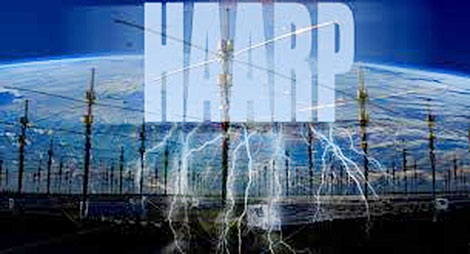
Introduction to HAARP
The High-Frequency Active Auroral Research Program (HAARP) has been a topic of fascination and controversy since its inception in the early 1990s. Located in Gakona, Alaska, HAARP was initially funded by the U.S. government with the purpose of researching ionospheric phenomena. However, it has become synonymous with conspiracy theories and speculative science. In this article, we will delve into what HAARP is, its scientific objectives, and the myths surrounding it.
What is HAARP?
HAARP is a research program designed to study the ionosphere, which is the upper layer of the atmosphere, extending from 30 miles to around 600 miles above the Earth’s surface. This layer contains a high concentration of ions and free electrons, which can influence radio wave propagation, satellite communication, and even global positioning systems (GPS).
The Ionospheric Research Instrument
At the core of HAARP’s operations is the Ionospheric Research Instrument (IRI), a powerful ionospheric research facility consisting of an array of 180 antennas spread over a 30-acre site. The IRI transmits high-frequency (HF) radio waves into the ionosphere, where they can be reflected back to Earth or absorbed, allowing researchers to study the ionosphere’s properties and behavior.
The Scientific Objectives of HAARP
HAARP’s primary objectives include:
- Studying Radio Wave Propagation: Understanding how radio waves travel through the ionosphere is crucial for improving communication technologies, particularly in remote areas.
- Investigating Ionospheric Effects on Satellites: HAARP helps researchers understand how solar activity and other natural phenomena affect satellite operations and global positioning systems.
- Weather Modification Research: While HAARP is often rumored to be involved in weather control, its real focus is on understanding the ionosphere’s interaction with atmospheric phenomena.
- Natural Disaster Prediction: Some scientists believe that studying the ionosphere can help predict seismic activity and other natural disasters.
Myths and Conspiracy Theories Surrounding HAARP
Despite its scientific objectives, HAARP has been the subject of numerous conspiracy theories. Here are some of the most common myths associated with HAARP:
1. Weather Manipulation
One of the most prevalent conspiracy theories is that HAARP has the capability to control the weather. Proponents of this theory claim that the program can induce hurricanes, earthquakes, and other natural disasters. However, there is no scientific evidence to support these claims. Weather patterns are driven by complex natural processes, and while some technologies can influence localized weather, HAARP does not possess such capabilities.
2. Mind Control
Another outlandish theory suggests that HAARP can manipulate human behavior and thoughts through the transmission of certain frequencies. This theory lacks any credible scientific backing and is often dismissed by experts in neuroscience and psychology.
3. Military Applications
HAARP has also been linked to military applications, with some believing it is a tool for conducting mind control experiments or as a weapon for destabilizing enemy nations. While the U.S. military did have a role in funding HAARP, its operations have always been focused on scientific research rather than military applications.
The Reality of HAARP’s Impact
The truth is that HAARP has contributed significantly to our understanding of the ionosphere and has played a role in developing communication technologies. Research conducted at HAARP has been published in various scientific journals, contributing to the broader body of knowledge in atmospheric science.
Scientific Contributions
- Improved Communication Systems: Insights gained from HAARP’s research have led to advancements in radio communication, particularly for military and maritime applications.
- Enhanced Satellite Operations: By understanding how ionospheric conditions affect satellite signals, researchers can develop better methods for maintaining satellite operations.
- Public Awareness of Atmospheric Science: HAARP has sparked public interest in atmospheric science, encouraging educational initiatives and research partnerships across the globe.
Conclusion
HAARP remains a vital research facility with a focus on understanding the ionosphere and its implications for communication technologies and natural disaster prediction. While the myths and conspiracy theories surrounding HAARP can be captivating, it is essential to rely on scientific evidence and credible sources to discern fact from fiction.
Call to Action
If you are interested in learning more about atmospheric science or HAARP’s contributions to our understanding of the ionosphere, consider exploring reputable scientific journals, or even participating in educational programs dedicated to atmospheric research. Together, we can foster a better understanding of the complex interactions within our atmosphere and the technologies that rely on them.
Keywords
- HAARP
- High-Frequency Active Auroral Research Program
- Ionosphere
- Atmospheric science
- Weather manipulation myths
- Radio wave propagation
- Satellite communication
- Conspiracy theories
By following SEO best practices, this article is optimized for search engines while providing engaging, informative content to readers interested in understanding HAARP and its scientific significance.
